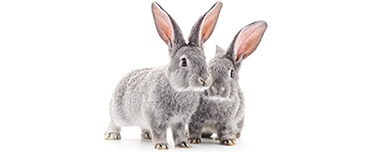How to clip your rabbits’ nails

Overview
- Make sure your rabbit is comfortable and secure on a non-slip surface when you cut their nails.
- Always handle your rabbits gently and carefully.
- Use special rabbit nail clippers, not scissors or human clippers.
- If possible, have someone to hold your rabbit.
- If you struggle to cut your rabbits’ claws at home, ask your vet for advice.
 Video found at youtu.be/7UG9mXtTzZ0
Video found at youtu.be/7UG9mXtTzZ0
Step 1 – Preparation
- Always handle your rabbits gently and carefully.
- Always use a pair of special rabbit nail clippers. Don’t use scissors or human nail clippers, as they will damage rabbit claws.
- Have someone else hold your rabbit securely on a non-slip surface.
Step 2 – Look for the quick
- The quick is the bit inside the nail that contains blood vessels and nerves. In light-coloured nails it will be red or pink, so should be easy to see.
- This part of the nail will bleed and be painful if it is cut.
- You should clip a couple of millimetres away from the quick.
- If your rabbit has dark claws, estimate where to cut based on another nail. If all the claws are dark then ask your vet for advice.
Step 3 – Continue clipping the other nails
- Continue to clip the other claws.
- If a nail bleeds, don’t panic, you can dip it in cornflour to help it clot or hold some cotton wool around it until the bleeding stops.
Step 4 – Offer treats!
- Give your rabbit some treats to reward them. This will help them to see nail clipping as a positive experience.
Don’t force your rabbits to have their nails cut; if you are struggling, contact your vet for their advice.
How many claws do my rabbits have?
Most rabbits have five nails on each front foot and four on each back foot - eighteen in total.
Can I hold my rabbits on their back to clip their claws?
Rabbits should never be held on their back in a “hypnotised” or “tranced” state. This is a response to predator attacks and is very distressing for them.
Published: September 2022
Did you find this page useful?
Tell us more
Please note, our vets and nurses are unable to respond to questions via this form. If you are concerned about your pet’s health, please contact your vet directly.
Thank you for your feedback
Want to hear more about PDSA and get pet care tips from our vet experts?
Sign up to our e-newsletter
Written by vets and vet nurses. This advice is for UK pets only. Illustrations by Samantha Elmhurst.
